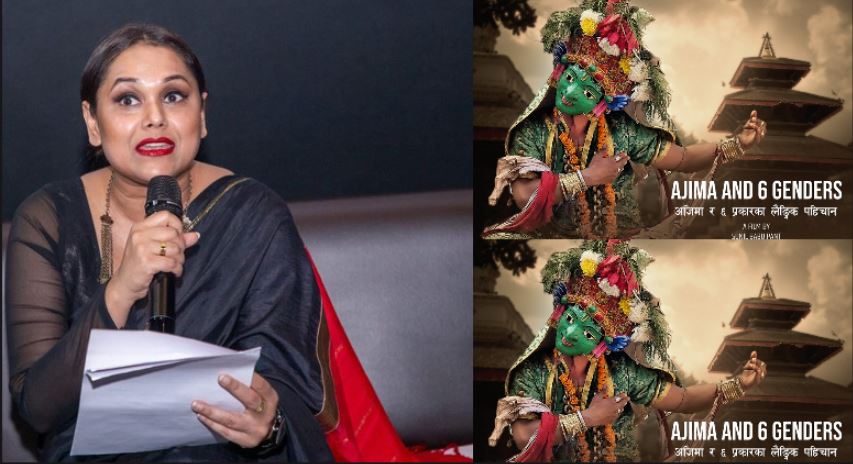
This was one of the sentences from 𝐀𝐣𝐢𝐦𝐚 𝐚𝐧𝐝 𝟔 𝐆𝐞𝐧𝐝𝐞𝐫𝐬, a film by @pantsunilbabu.
Recently, I had the privilege of moderating a session for the film, which is a fascinating exploration of Kathmandu Valley’s heritage, its matriarchal society, and the acceptance of gender fluidity.
Here’s how I structured the session to maximize audience interest and set the stage for an engaging film experience:
𝟏. 𝐏𝐫𝐨𝐯𝐢𝐝𝐢𝐧𝐠 𝐂𝐨𝐧𝐭𝐞𝐱𝐭
I began by framing the film within its historical and cultural context. I explained how Kathmandu Valley’s rich heritage included a matriarchal society where gender fluidity was not only accepted but celebrated. This background helped the audience appreciate the film’s significance and its cultural relevance.
𝟐. 𝐇𝐢𝐠𝐡𝐥𝐢𝐠𝐡𝐭𝐢𝐧𝐠 𝐊𝐞𝐲 𝐄𝐥𝐞𝐦𝐞𝐧𝐭𝐬
I highlighted the film’s unique perspective on a forgotten part of Kathmandu’s history, focusing on the director’s vision and innovative portrayal of gender and societal norms.
𝟑. 𝐄𝐧𝐠𝐚𝐠𝐢𝐧𝐠 𝐭𝐡𝐞 𝐀𝐮𝐝𝐢𝐞𝐧𝐜𝐞
To spark curiosity, I asked Sunil Babu Pant an anecdote about the research process and the challenges the filmmakers faced in uncovering this part of history. This personal touch created a connection with the audience and piqued their interest.
𝟒. 𝐒𝐞𝐭𝐭𝐢𝐧𝐠 𝐄𝐱𝐩𝐞𝐜𝐭𝐚𝐭𝐢𝐨𝐧𝐬
I gave a brief overview of the film’s content, mentioning its exploration of gender fluidity and matriarchal society without revealing too much. I prepared the audience for a thought-provoking and visually captivating experience.
𝟓. 𝐒𝐡𝐚𝐫𝐢𝐧𝐠 𝐈𝐧𝐬𝐢𝐠𝐡𝐭𝐬
I discussed the film’s relevance to today’s gender and heritage debates, showing how it bridges past and present issues while offering a fresh perspective on gender acceptance.
Moderating this session was a rewarding experience, and I’m thrilled that the audience left with a deeper understanding of Kathmandu Valley’s rich heritage and a renewed perspective on gender fluidity.
Copyright © All right reserved to pahichan.com Site By: Sobij.